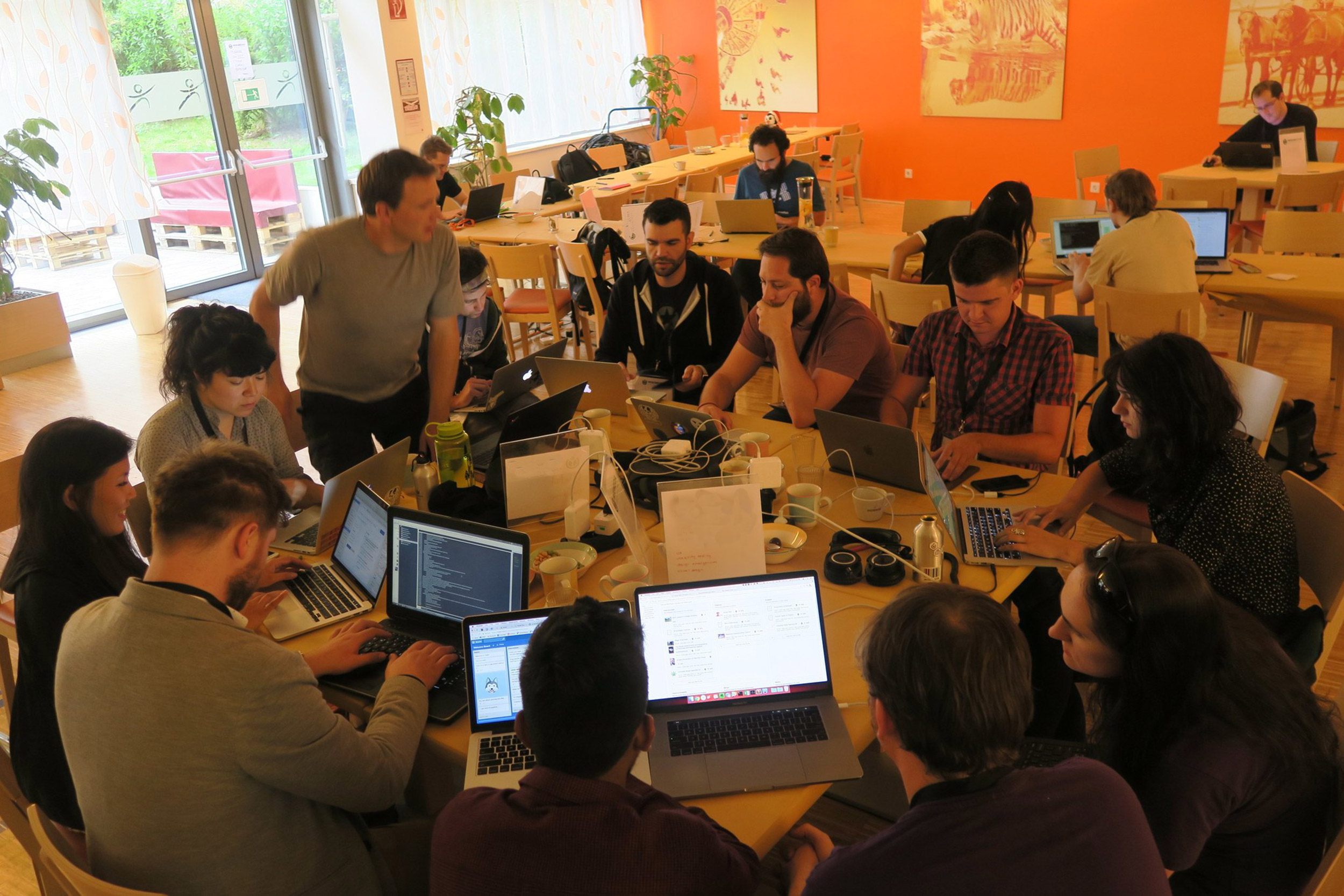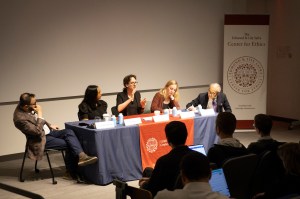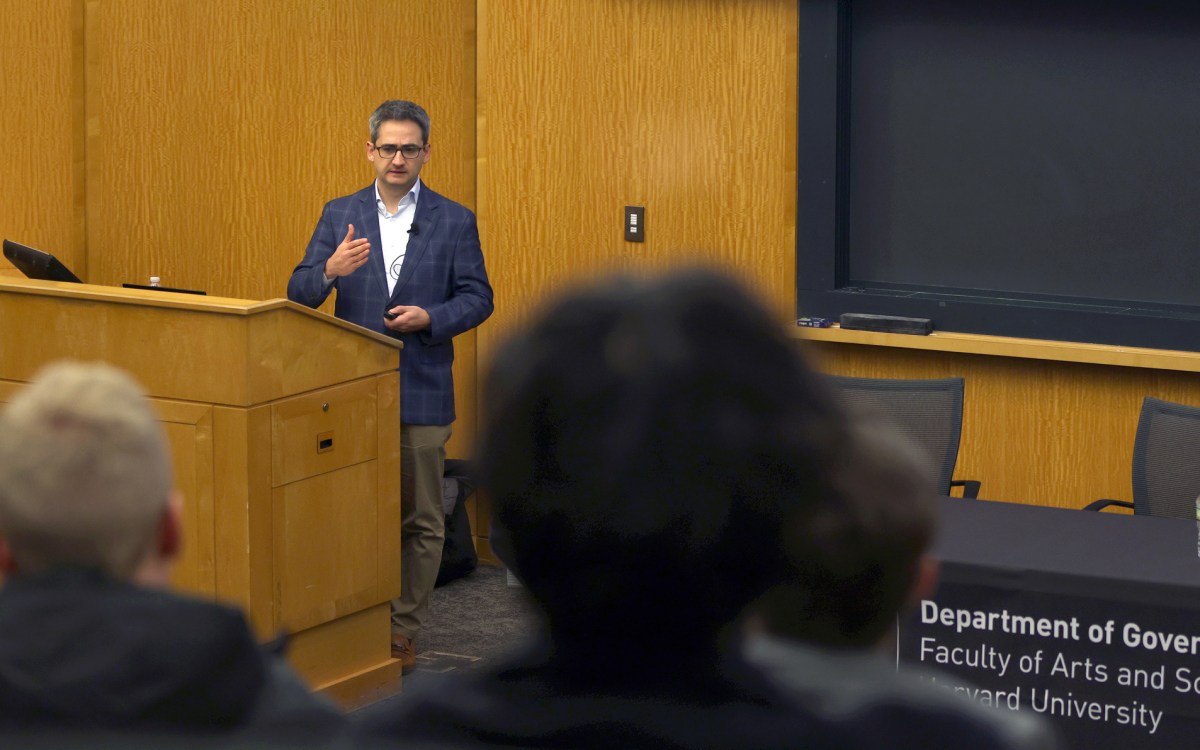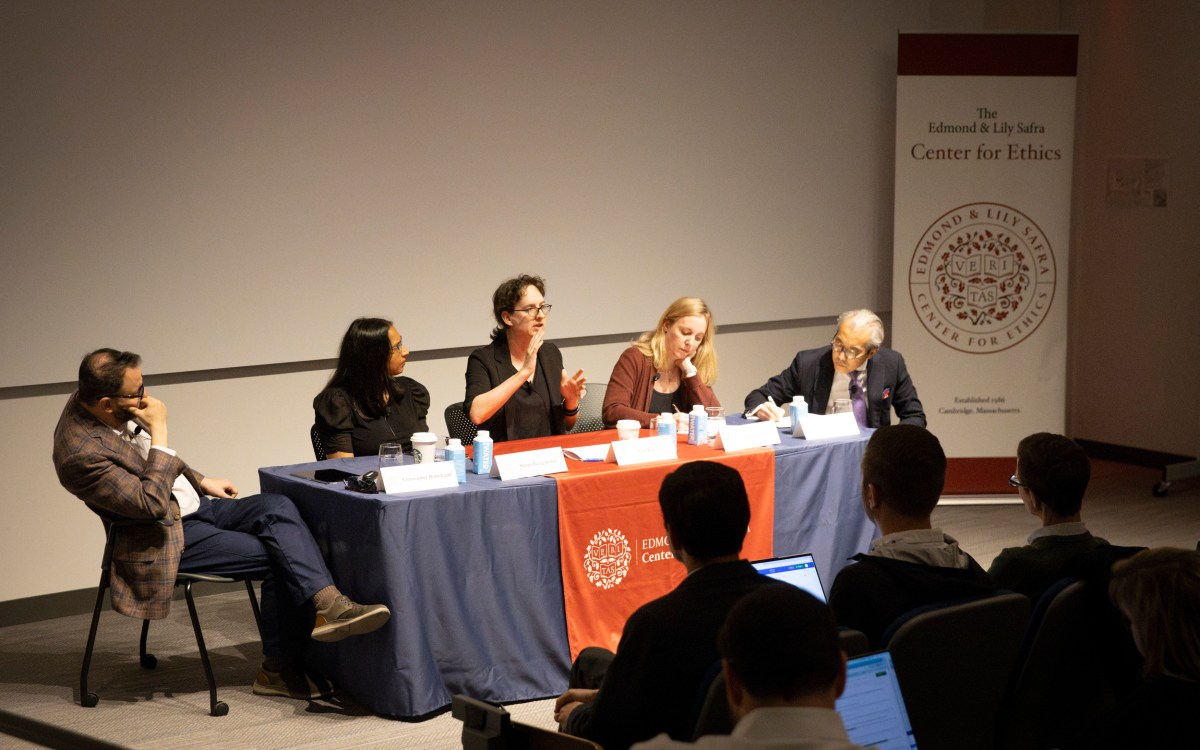
HBS Associate Professor Ethan Bernstein sees a number of workplace implications for different collaboration models, including the advantages of alternating independent efforts with group work over a period of time.
Credit: Wikimedia Commons
Problem-solving techniques take on new twist
For best solutions, intermittent collaboration provides the right formula
More than a decade after the introduction of the first smartphone, we are awash in always-on technologies — email, instant messaging, social media, Slack, Yammer, and so on. All that connectivity means we are constantly sharing ideas, knowledge, thinking, and answers. Surely that “wisdom of the crowd” is good for problem-solving at work, right?
Not so fast. New research by Harvard Business School (HBS) Associate Professor Ethan Bernstein and colleagues, published in Proceedings of the National Academy of Sciences (PNAS) on Aug. 13, suggests that “always on” may not always be effective. Instead, “intermittently on” might be better for complex problem-solving.
Bernstein, Assistant Professor Jesse Shore of the Questrom School of Business at Boston University, and Professor David Lazer of Northeastern University put together and studied a number of three-person groups performing a complex problem-solving task. The members of one set of groups never interacted with each other, solving the problem in complete isolation; members of another set constantly interacted, as we do when equipped with always-on technologies; and members of the third set of groups interacted only intermittently.
From prior research, the researchers anticipated that the groups whose members never interacted would be the most creative, coming up with the largest number of unique solutions — including some of the best and some of the worst — and a high level of variation that sprang from their working alone. In short, they expected the isolated individuals to produce a few fantastic solutions but, as a group, a low average quality of solution due to the variation. That proved to be the case.
The researchers also anticipated that the groups whose members constantly interacted would produce a higher average quality of solution, but fail to find the very best solutions as often. In other words, they expected the constantly interacting groups’ solutions to be less variable but at the cost of being more mediocre. That proved to be the case as well.
But here’s where the researchers found something completely new: Groups whose members interacted only intermittently preserved the best of both worlds, rather than succumbing to the worst. These groups had an average quality of solution that was nearly identical to those groups that interacted constantly, yet they preserved enough variation to find some of the best solutions, too.
Perhaps the most interesting result was that when their interactions were intermittent, the higher performers were able to get even better by learning from the low performers. When high and low performers interacted constantly, the low performers tended to simply copy high performers’ solutions and were in turn generally ignored by the high performers. But when their interactions were intermittent, the low performers’ ideas helped the high performers achieve even better solutions.
Bernstein and his co-authors see a number of workplace implications for these findings, including the advantages of alternating independent efforts with group work over a period of time. In some ways, that’s how work traditionally has been done in organizations — with individuals working alone, then coming together in a meeting, then returning to work alone. But advancing technology has changed those cycles.
“As we replace those sorts of intermittent cycles with always-on technologies, we might be diminishing our capacity to solve problems well,” Bernstein notes.
The researchers see parallels in a number of trends in organizations today. Agile approaches to teamwork have some of this intermittent characteristic, given that they are organized into “sprints,” gatherings of people that focus on a particular problem and last only a short time. Similarly, hackathons are increasingly designed to provide some intermittency of interaction.
Organizations known for their excellence in creativity and brainstorming ideas, such as IDEO, often use a process that has intermittency built in. Even open offices, a concept about which Bernstein has recently completed research, often have both group spaces (booths, meeting rooms) and individual spaces (phone booths, pods) in which interaction can be paused for a period of time.
Given the study’s findings, the researchers conclude that these design-based tools for intermittent rather than constant interaction may be even more important for organizational productivity and performance than previously thought. They warn that the march toward always-on technology — and more and more digital collaboration tools — should not disturb intermittent isolation, lest it keep groups from achieving their best collective solutions to complex problems.
This research was supported by Office of Naval Research Grant G00005072 and funding from the Harvard Business School Division of Research and Faculty Development.




